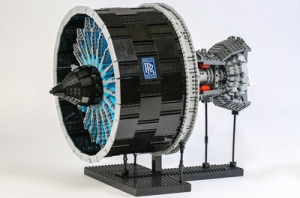![]()
Service Design Network (SDN) @ OPUS College of Business (6/15/18)
Service design — an emerging discipline at the intersection of product design and customer experience.
Service design is gaining momentum. The Minneapolis and Chicago chapters of SDN combined forces for a regional gathering at the OPUS College of Business on 6/15/18.
The agenda covered a broad spectrum of relevant topics — the evolution of service design, various sub-disciplines, application in verticals such as medical services and financial services.
Stefanie Lenway, dean of the business college, opened the event by reminding us of the nature of humanity with the citation of Robot-Proof by Joseph Aoun.

Barbara Barry, design lead at Mayo Clinic / Center for Innovation, covered the role of AI in service design; she encouraged us to use inter-disciplinary teams, beginning to end, in order to optimize the human / machine interface. She also cited “the Most Human Human” award in juxtaposition to “the Most Human Computer” award — a playful prize for the human who can most reliably pass the Turing test.
Shilpi Kumar reminded us that ideation is not innovation. Emphasizing flow of interactions for workplace design, she illustrated how we need to connect the organizational and functional dots that enable ideation to “flow” toward a culture of innovation. She also encouraged the use of structured communication to improve productivity. My perspective: Innovation is 80% social — technological innovation is a socio-technical system.
(A principle of systems engineering: All systems are composed of sub-systems and operate in the context of a super-system; technological innovation operates in the context of a social system.)

I was inspired by a workshop on design fiction, guided by Chanda Patel at Fjord. Design fiction uses science fiction to generate / stimulate abstract ideas. It was helpful to learn how we can assemble a vocabulary of structured components (arc / terrain / object / mood) to generate an profusion of imaginative scenarios. Like systematic innovation and technological forecasting, disciplines that I practice, design fiction eliminates barriers to unconventional solutions and stimulates divergent thinking. I enjoyed partnering on this exercise with James Magargee / 3M, Nicholas Breutzman / Mayo Clinic, and Mike Conway / Azul Seven. We also got to observe several other teams in action. Other workshops included biomimicry in service design and advanced service blueprinting.
Megan Enright and Laura Salisbury at Salesforce offered insights for gaining adoption of service design in the enterprise. Laura and Megan were formerly at Sequence, a design consultancy that was acquired by Salesforce; acquisition of design consultancies is a trend. Their presentation was intriguing from the perspective of organizational design. They suggested organizational synergies / intersections between service designers and [1] content strategists (journey mapping / storytelling); [2] product managers (product vision / product roadmap); [3] technical architects (product vision / product roadmap. The “meta” notation here: use service design to gain adoption of service design! My perspective: Introducing service design is a social innovation.

Amy Brady at US Bank also stimulated my brain with her perspective on organizational design. She asserted an ontology in which human interactions are relational, while organizational interactions are transactional. Within that ontology, we may find some clues to improving service design. We were nudged to imagine the other combinations: human / human, organizational / organizational (inter-organizational). Amy also posed an experience framework with five phases of quality (from high-touch to low-touch) and corresponding cost. This framework could improve overall value by customizing services to needs. My perspective: Are organizational interactions inherently transactional? How ’bout the magic quadrant — organizational x relational? We know that culture is aggregate behavior — individual behavior aggregated at the communal level. If we can transfer individual (human) behavior to the aggregate (cultural) level, can we replace “organizational” interactions at the macro level with “cultural” interactions that are relational?
Kat Jayne at Fathom Consulting elaborated on meaning, purpose, and connection as important, yet intangible, aspects of human health. She recommended Being Mortal by Atul Gawande.
Radhika Gupta at Fjord covered workplace design / workflow design and the principles that maximize productivity / creativity. Her ethnographic bottom line: Workplaces should be customized for various personalities and contain a variety of spaces. Even the kool, new, open spaces are not a one-size-fits-all proposition. Provide different spaces for different personalities; provide time / space for “not” connecting. Kool is customized. Service design in action.

Mark Jones at SD Lab reminded us of scenario planning for alternate futures. As a tool that has proven historically effective at promoting divergent thinking and identifying blind spots, Mark is encouraging a resurgence in its application.
I enjoyed a spontaneous conversation with Justin Royer, a principal at Sprocket CX, around the intersection of systematic innovation and design thinking. He also entertained me with an explanation of the “Sprocket” branding, and I entertained (?) him with the double meaning of “Virtual Coast“.
It was a full agenda. Thanks to Molly Fuller and the rest of her Minneapolis / Chicago team for organizing this action-packed event!
Related events:
I will be presenting on systematic innovation at Society for Concurrent Product Development (SCPD) on 7/19/18 and DevJam / Product Agility on 8/14/18; details are coming soon.
Customer Focus is coming to Minneapolis on 7/17/18; it seeks to bring new perspective and emphasis to customer experience and employee experience.
post @ LinkedIn: “Adventures in Service Design”


